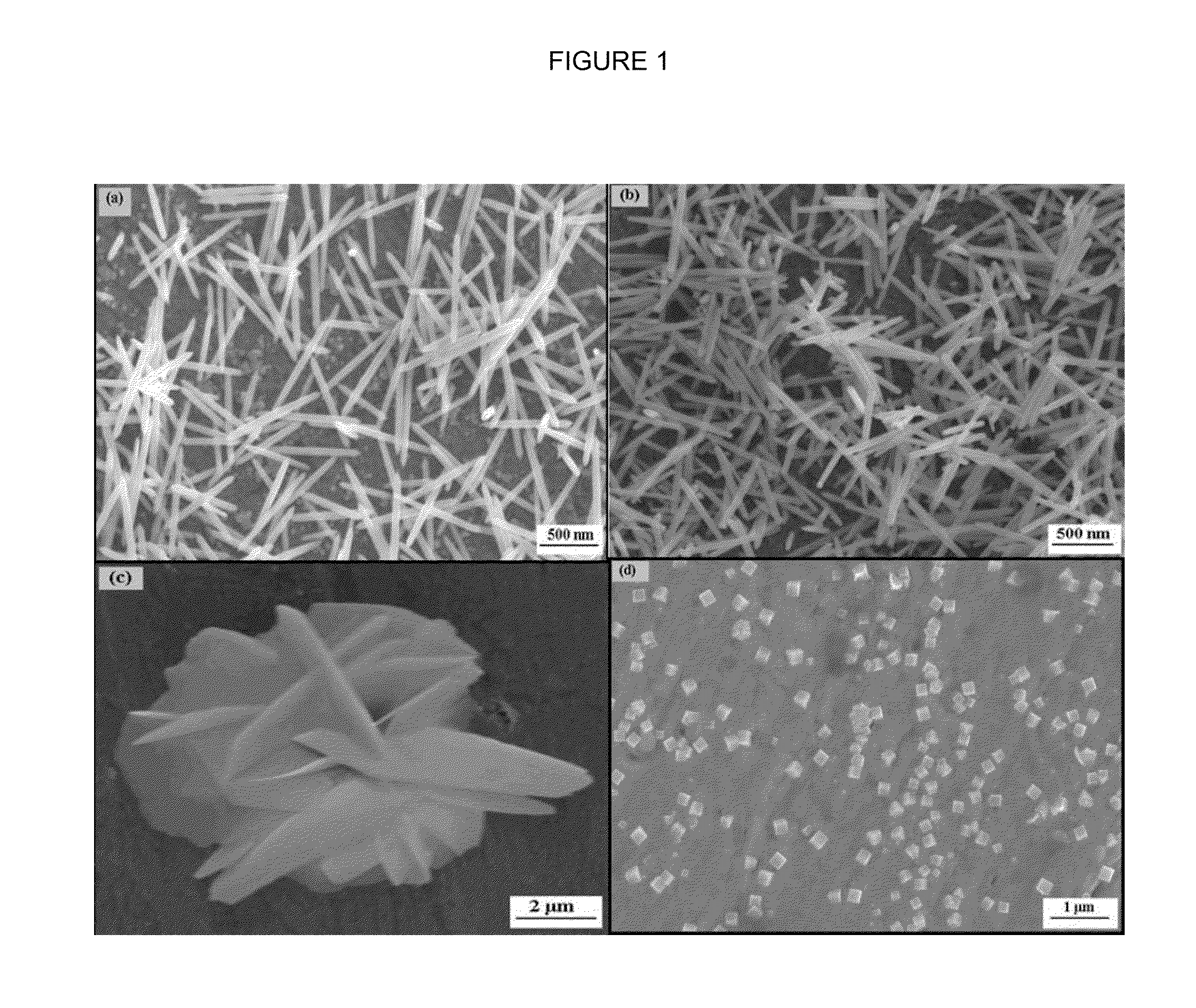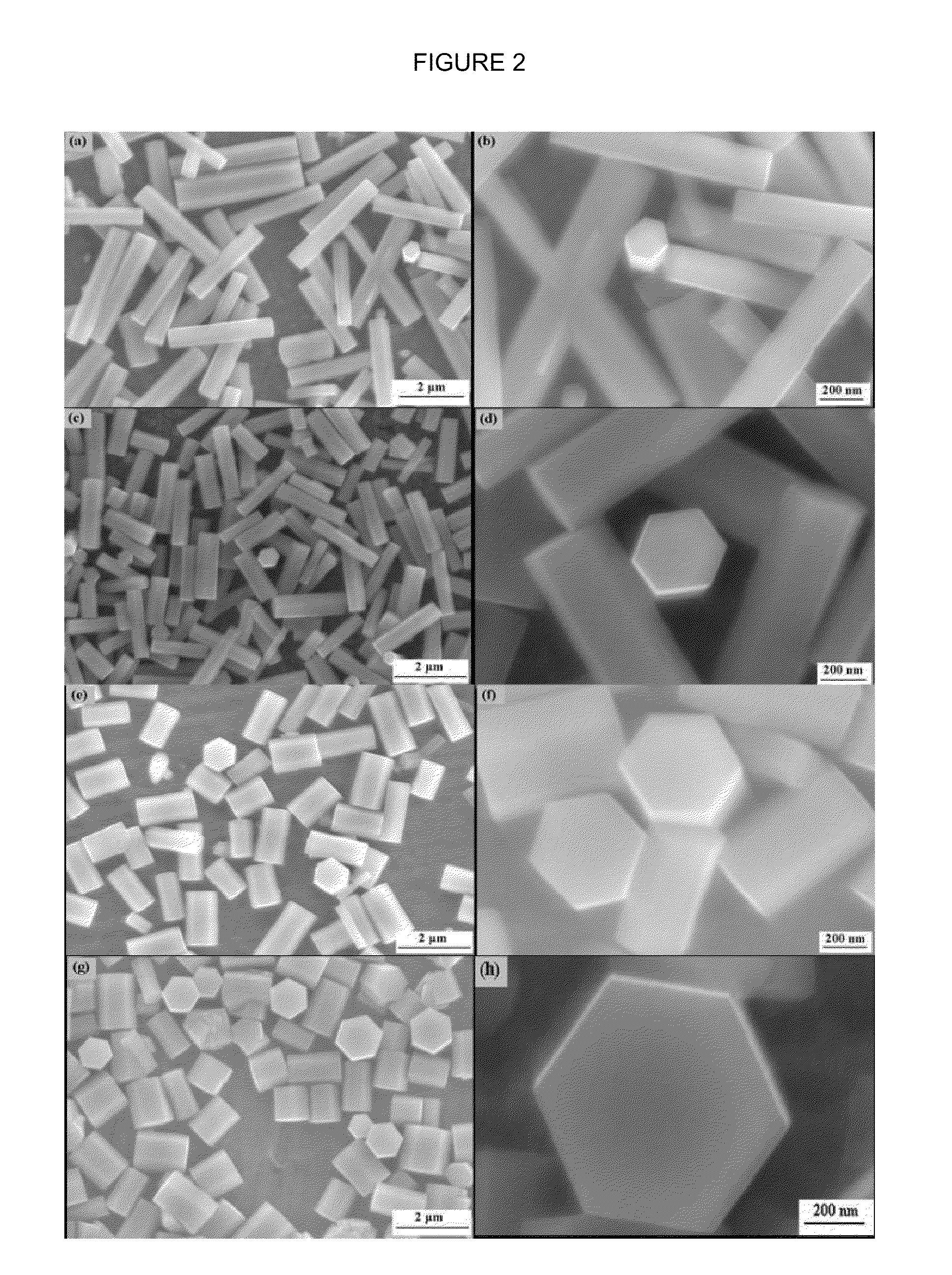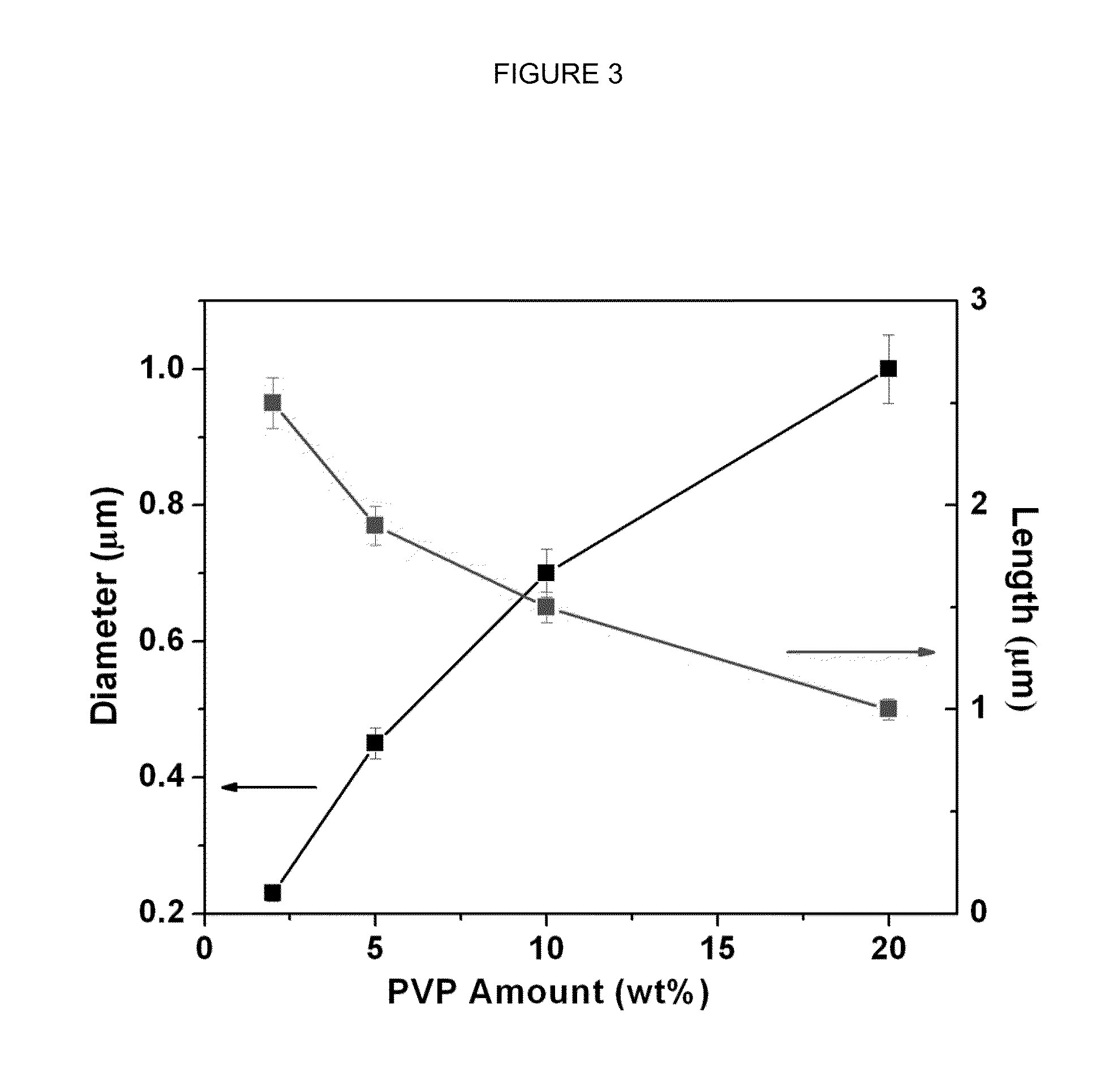Polymer-mediated synthesis of ZnO nanostructures
a technology of nanostructures and polymers, applied in the field of synthesis of zinc oxide (zno) nanostructures, can solve the problems of complex procedures, high cost, and complex instrumentation, and achieve the effects of high cost, high cost, and high cos
- Summary
- Abstract
- Description
- Claims
- Application Information
AI Technical Summary
Benefits of technology
Problems solved by technology
Method used
Image
Examples
example 1
Effect of PVP Addition
[0066]An aqueous zinc chloride solution (0.01 M) was mixed with an aqueous HMTA (0.01 M) solution in a molar ratio of 1:1. To this mixture, PVP (MW=40,000) was added in a 2 wt % (with respect to the total weight of zinc chloride) concentration. Before precipitation began, a cleaned copper substrate is vertically lowered into the reaction solution and the solution contained in a beaker is then placed inside a heating oven at 85-90° C. for 80 min. Then the deposited substrate is removed from the solution, copiously rinsed with milliQ water and dried at room temperature. For cleaning purposes, the substrate is rinsed ultrasonically sequentially for 10 minutes with each of acetone and milliQ water before deposition.
[0067]The same reaction was repeated with varying concentrations of PVP: the reaction was repeated with 5, 10, and 20 wt % of PVP.
[0068]FIG. 2 shows the effect of increasing the PVP concentration on the diameter of the nanorods: As the concentration of P...
example 2
Effect of PEG Addition
[0070]An aqueous zinc chloride solution (0.01 M) was mixed with an aqueous HMTA (0.01 M) solution in a molar ratio of 1:1. To this mixture, PEG (5,000 MW) was added in a 5 wt % (with respect to the total weight of zinc chloride) concentration. Before precipitation began, a cleaned copper substrate is vertically lowered into the reaction solution and the solution contained in a beaker is then placed inside a heating oven at 85-90° C. for 80 min. Then the deposited substrate is removed from the solution, copiously rinsed with milliQ water and dried at room temperature. For cleaning purposes, the substrate is rinsed ultrasonically sequentially for 10 minutes with each of acetone and milliQ water before deposition.
[0071]SEM (FIG. 4) shows ZnO nanowires produced by this procedure and having a length of around 5 μm, a diameter of about 70-80 nm, and an aspect ratio of 65:1 to 70:1.
example 3a
Nanoneedles
[0072]The nanoneedles shown in FIG. 1(a) are prepared in the absence of a polymer solution and according to the general procedure using zinc chloride and HMTA: An aqueous zinc chloride solution (0.01 M) was mixed with an aqueous HMTA solution (0.01 M) in a molar ratio of 1:1. Before precipitation began, a cleaned copper substrate is vertically lowered into the reaction solution and the solution contained in a beaker is then placed inside a heating oven at 85-90° C. for 50 min. Then the deposited substrate is removed from the solution, copiously rinsed with milliQ water and dried at room temperature. For cleaning purposes, the substrate is rinsed ultrasonically sequentially for 10 minutes with each of acetone and milliQ water before deposition.
PUM
 Login to View More
Login to View More Abstract
Description
Claims
Application Information
 Login to View More
Login to View More - R&D
- Intellectual Property
- Life Sciences
- Materials
- Tech Scout
- Unparalleled Data Quality
- Higher Quality Content
- 60% Fewer Hallucinations
Browse by: Latest US Patents, China's latest patents, Technical Efficacy Thesaurus, Application Domain, Technology Topic, Popular Technical Reports.
© 2025 PatSnap. All rights reserved.Legal|Privacy policy|Modern Slavery Act Transparency Statement|Sitemap|About US| Contact US: help@patsnap.com



